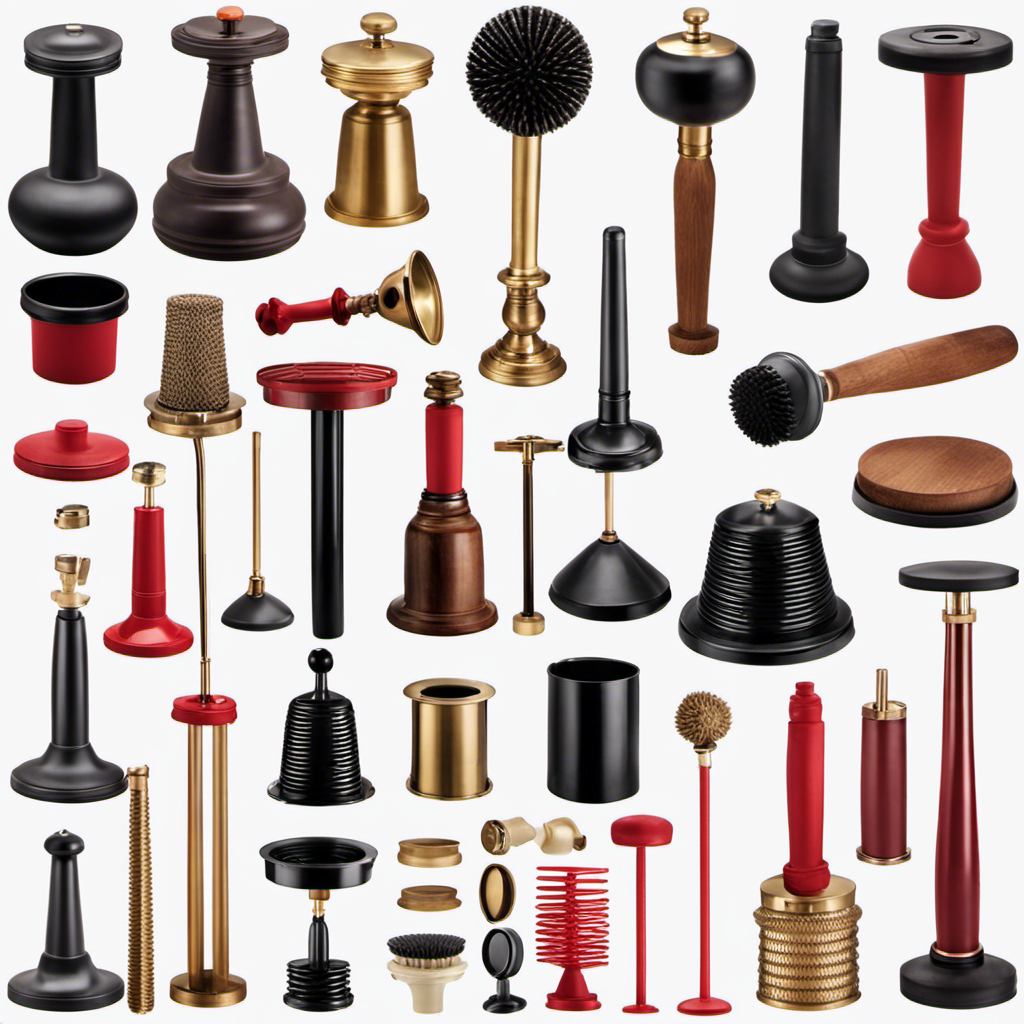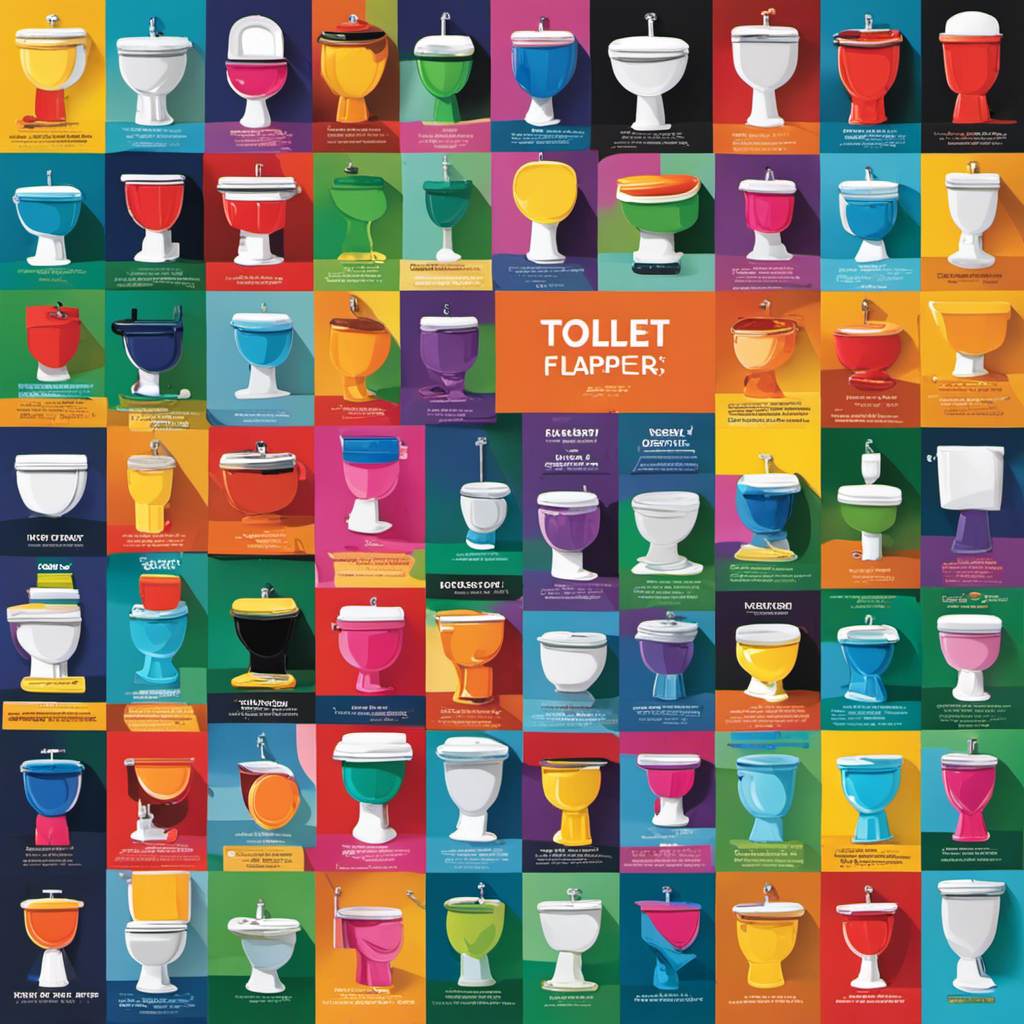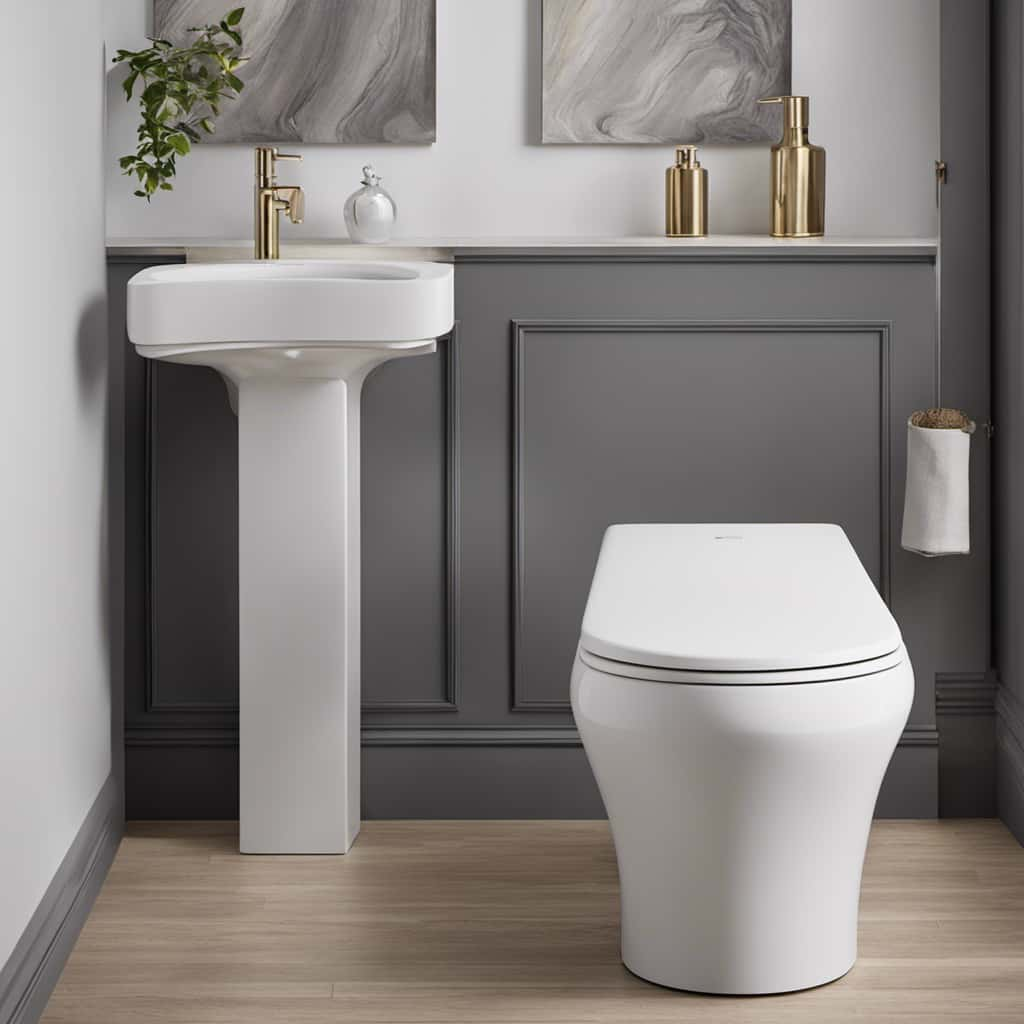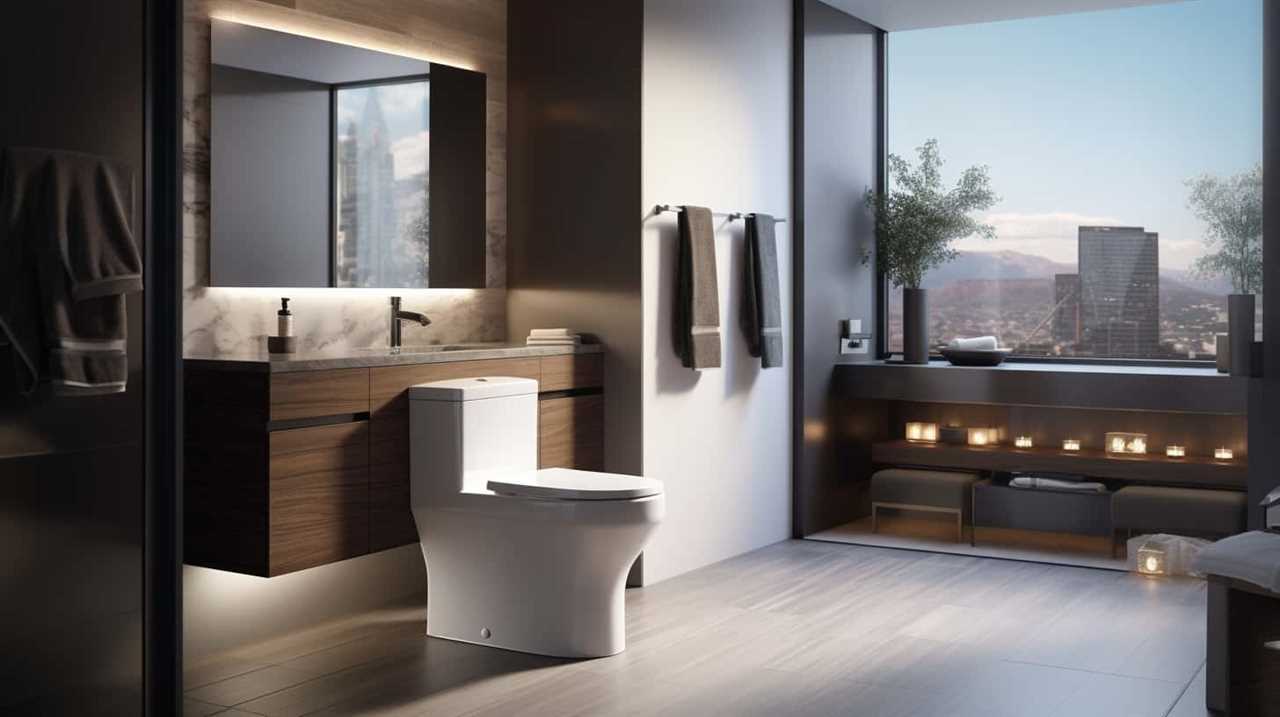I gotta say, plunging a stubborn clog can be quite the challenge. But fear not, because I’ve got the ultimate guide to toilet plungers for those pesky clogs.
We’re diving deep into the different types of plungers, like sink cup plungers and flange plungers, and giving you the lowdown on their features and effectiveness.
Plus, I’ll be reviewing the top six unclogging plungers on the market, so you can make an informed choice.
Trust me, with this guide, you’ll be conquering clogs like a pro in no time.
Key Takeaways
- There are three main types of toilet plungers: sink cup plungers, flange plungers, and accordion plungers.
- Sink cup plungers are the most common type and can be used in sinks, toilets, bathtubs, and shower drains. They work best on flat surfaces and provide a seal for effective plunging.
- Flange plungers are effective for toilets with curved drains. They have a soft flap made of rubber that folds out from inside the suction cup, allowing them to work well on both curved and flat drains.
- Accordion plungers offer the most power and force, but can be a bit difficult to use. They have a short handle and a cup-shaped end that fits securely into toilet drains, creating a seal and vacuum for easier clog removal.
Types of Toilet Plungers
I find it helpful to know the different types of toilet plungers available for unclogging stubborn clogs.
There are three main types: sink cup plungers, flange plungers, and accordion plungers.
Sink cup plungers are the most common type, with a wooden handle and rubber end. They work best on flat surfaces and can be used in sinks, toilets, bathtubs, and shower drains.
Flange plungers are effective for toilets with curved drains, as they have a soft flap made of rubber that folds out from inside the suction cup.
Accordion plungers offer the most power and force, but can be a bit difficult to use due to their short handle.
When choosing a plunger, consider the pros and cons of different materials, such as wood, plastic, or metal handles.
Additionally, to effectively plunge a toilet, make sure to create a tight seal between the plunger and the drain, and use a combination of pushing and pulling motions to dislodge the clog.
Features of Different Toilet Plungers
The different types of toilet plungers include sink cup plungers, flange plungers, and accordion plungers.
Each type has its own unique features and design that contribute to its effectiveness in unclogging toilets.
Sink cup plungers are a common type, with a wooden handle and rubber end that can be used on sinks, toilets, bathtubs, and shower drains. They work best on flat surfaces and provide a seal for effective plunging.
Flange plungers, on the other hand, are specifically designed for toilets with curved drains. They have a soft flap made of rubber that folds out from inside the suction cup, providing a seal and vacuum for clearing tough clogs.
Accordion plungers offer the most power and force, with a cup-shaped end that fits securely into toilet drains. While they can be a bit difficult to use, they create a strong seal and vacuum for easier clog removal.
Overall, the effectiveness of different toilet plunger designs depends on the specific needs of your toilet and the type of clog you are dealing with.
Review of Top 6 Unclogging Toilet Plungers
The top 6 unclogging toilet plungers include the Neiko Plunger And Brush Combo Set, Luigis Toilet Plunger, MR. SIGA Toilet Brush And Plunger Combo, mDesign Plunger, and JS Jackson Supplies Plunger. These plungers have different features and benefits that make them effective for clearing stubborn clogs.
-
Neiko Plunger And Brush Combo Set: This combo set includes a plunger and brush for convenient cleaning. It has a sturdy design and provides a strong seal for effective plunging.
-
Luigis Toilet Plunger: This plunger is known for its powerful suction and ability to clear tough clogs. It has a durable construction and ergonomic handle for easy use.
-
MR. SIGA Toilet Brush And Plunger Combo: This combo set not only includes a plunger but also a brush for comprehensive cleaning. It has a two-fold suction cup for effective clearing of clogs and comes with a two-compartment caddy for easy storage.
Using chemical drain cleaners for unclogging toilets has both pros and cons. They can be effective in breaking down clogs quickly, but they can also be harmful to your plumbing system and the environment. It is important to follow the instructions carefully and use them sparingly.
To maintain and extend the lifespan of your toilet plungers, here are some tips:
- Rinse the plunger after each use to remove any residue.
- Store the plunger in a dry and clean place to prevent mold and bacteria growth.
- Replace the plunger if it becomes damaged or worn out to maintain its effectiveness.
Detailed Information on Notable Toilet Plungers
Out of the top 6 unclogging toilet plungers, the MR. SIGA Toilet Brush and Plunger Combo is a standout option. With its two-fold suction cup, this plunger provides effective clearing of stubborn clogs. Additionally, it comes with a two-compartment caddy, making it convenient for storage. The MR. SIGA Toilet Brush and Plunger Combo is not only functional but also available in different colors to match your bathroom decor.
Another notable plunger is the JS Jackson Supplies Accordion Plunger. This accordion-style plunger offers the most power and force, making it easier to remove tough clogs. With its minimal pushing effort required, this plunger is a breeze to use. The JS Jackson Supplies Accordion Plunger comes in six vibrant color options, allowing you to choose one that suits your preferences. However, it is important to note that this plunger does not include a brush or caddy.
Both the MR. SIGA Toilet Brush and Plunger Combo and the JS Jackson Supplies Accordion Plunger are excellent choices for clearing clogs effectively.
Buying Guide and Additional Information
When choosing a plunger, it is important to consider the length and material of the handle. The handle length can impact the power and maneuverability of the plunger, while the material can affect its durability and hygiene.
It is important to choose a handle length that provides enough power for effective plunging but is still comfortable to use. Plastic or metal handles are often more hygienic than wood handles.
To properly use a toilet plunger, start by creating a seal between the plunger and the drain. Push down forcefully and then pull up quickly to create suction and dislodge the clog. Repeat this plunging motion several times until the clog is cleared.
Remember to clean and sanitize the plunger after each use to maintain hygiene.
Toilet Plungers Vs. Sink Plungers
As I consider which plunger to choose, I need to know the difference between toilet plungers and sink plungers.
Toilet plungers are specifically designed for unclogging toilets, while sink plungers are meant for sinks, bathtubs, and shower drains.
The main distinction between the two is that toilet plungers have a flange, which is a soft rubber flap that folds out from inside the suction cup. This flange is effective for unclogging toilets with curved drains, as it creates a seal and vacuum for clearing tough clogs.
Sink plungers, on the other hand, lack a flange and are not suitable for curved drains.
When it comes to handle materials, toilet plungers typically have handles made of wood, while sink plungers often have handles made of plastic.
The choice of handle material depends on personal preference, with some advantages of different materials including durability, hygiene, and comfort.
Frequently Asked Questions
Can I Use a Sink Plunger on a Toilet?
Yes, you can use a sink plunger on a toilet, but it may not be as effective as a toilet plunger. A toilet plunger is specifically designed for toilets and provides a better seal for clearing stubborn clogs.
Are There Any Plungers Specifically Designed for Curved Drains?
Yes, there are plungers specifically designed for curved drains. These specialized plungers provide a better seal and suction on curved surfaces, making them effective alternatives to traditional plungers for stubborn clogs in toilets with curved drains.
How Do I Know if a Plunger Creates a Good Seal?
To create a good seal with a plunger, make sure the rubber end is fully covering the drain. Apply firm pressure and ensure there is no air escaping. Signs of a good plunger seal include effective plunging and no water leakage.
What Is the Best Material for a Plunger Handle?
The best material for a plunger handle depends on personal preference. Wood handles offer durability, but may be less hygienic. Plastic handles are lightweight and easy to clean. Metal handles provide strength but can be cold to touch.
Can I Use a Toilet Plunger on a Sink?
Yes, a toilet plunger can be used on a sink as long as it is a sink cup plunger. It’s important to note that sink clogs are often caused by hair, food particles, or grease.










